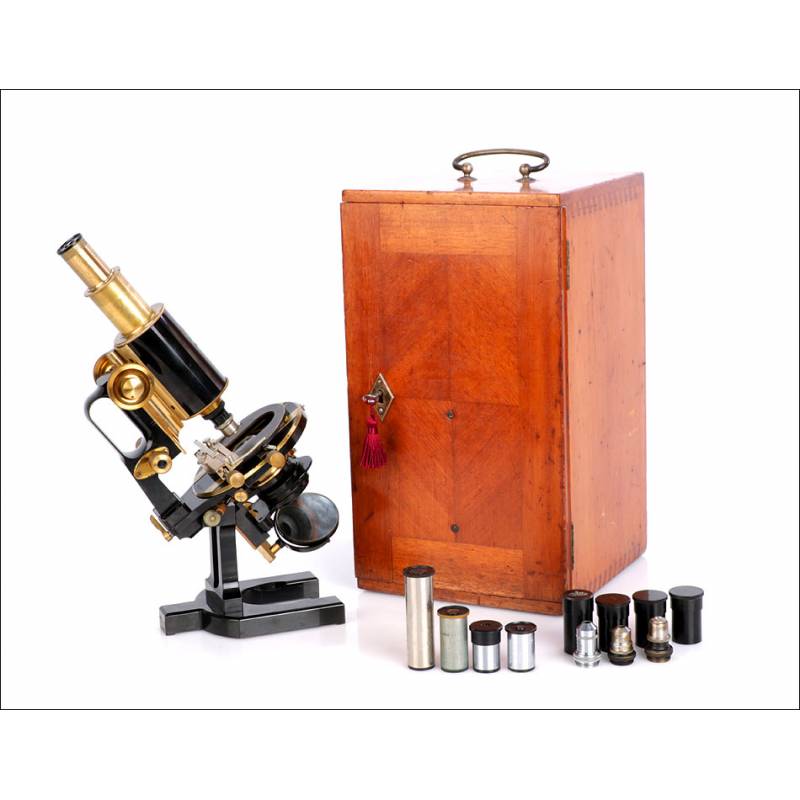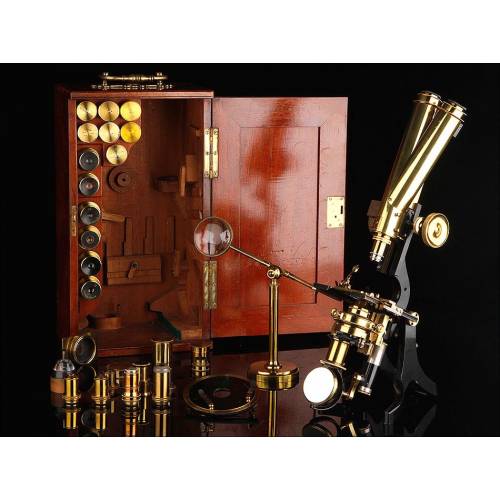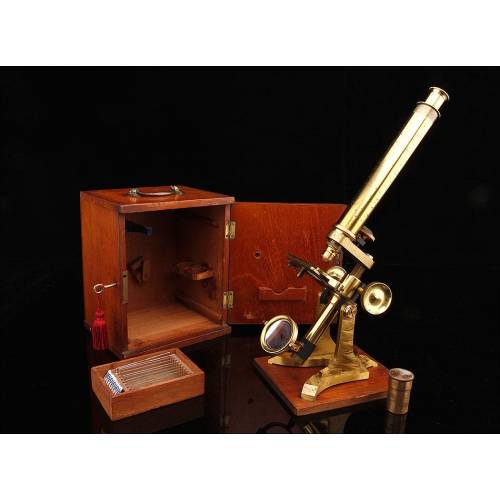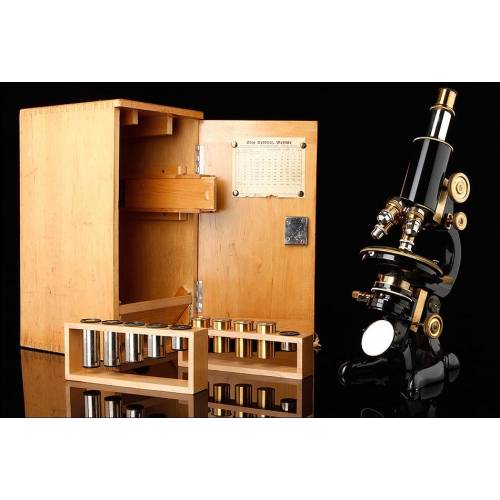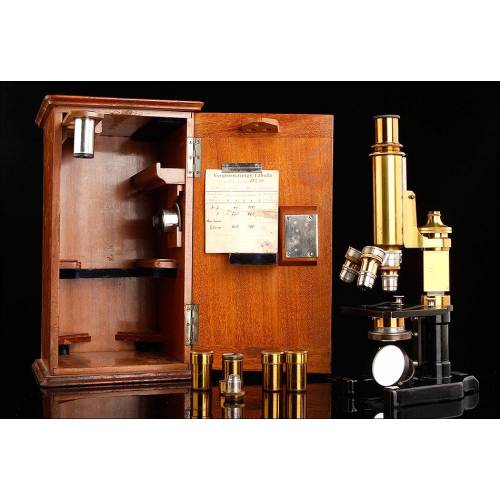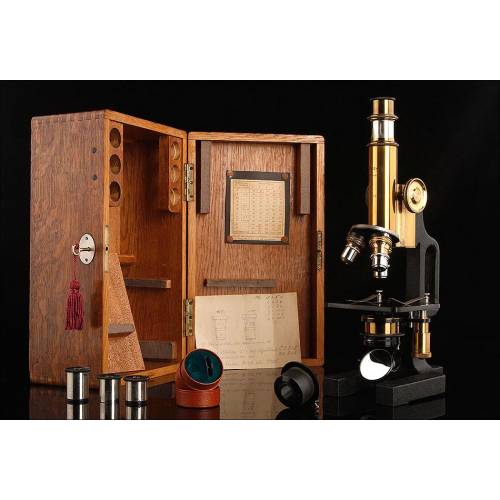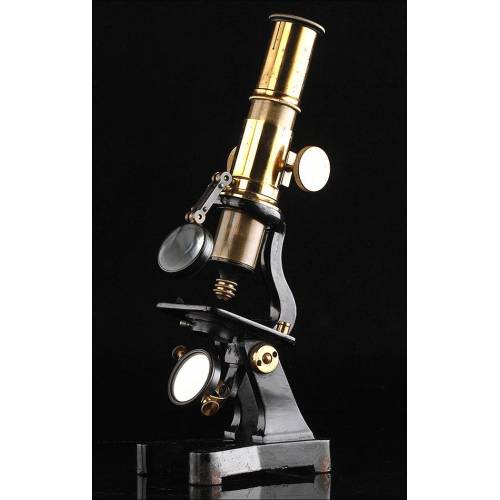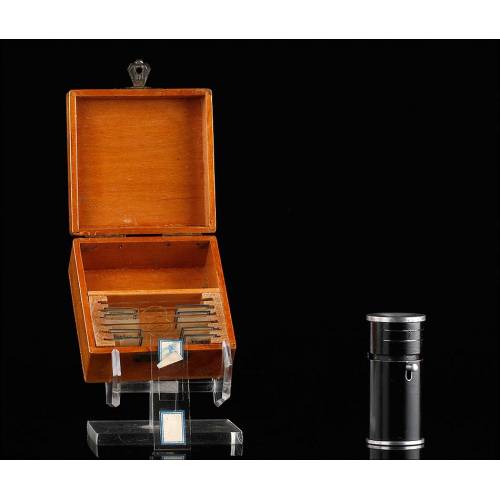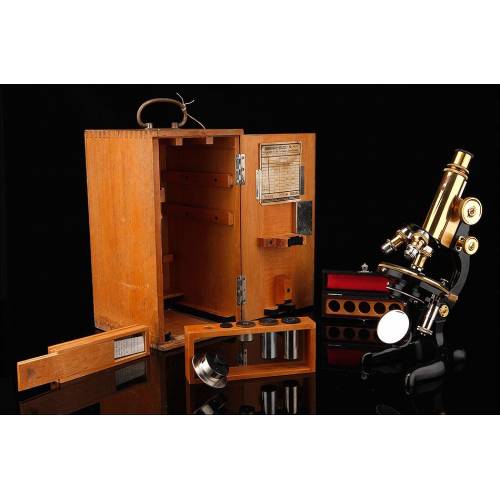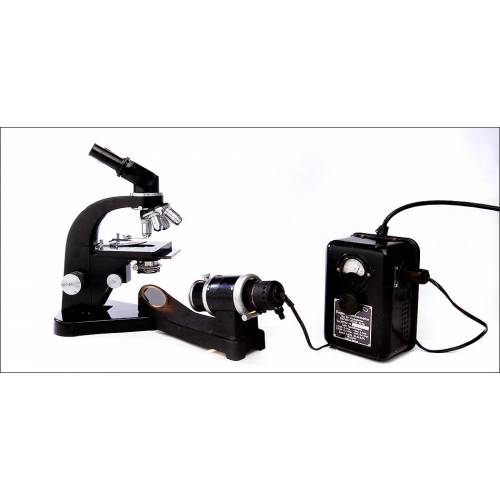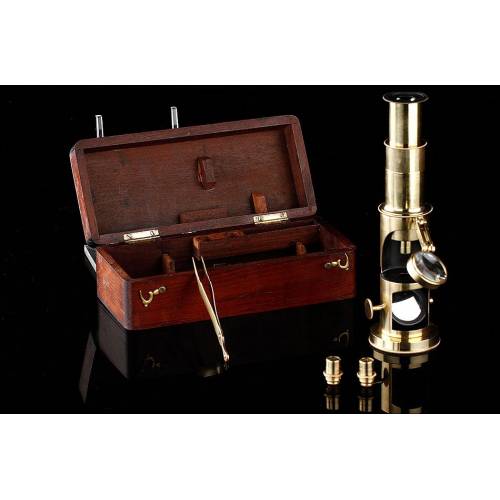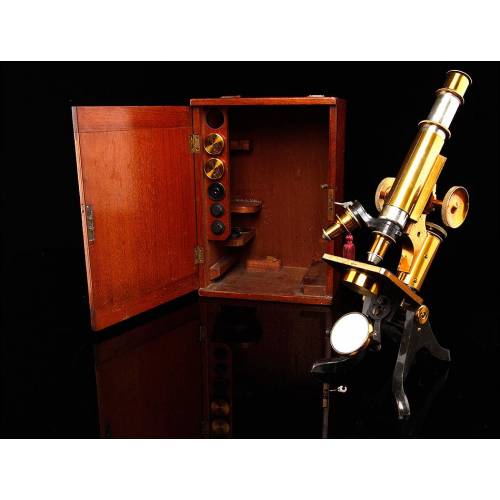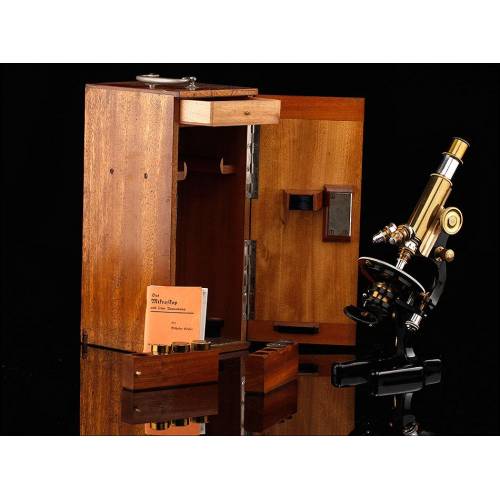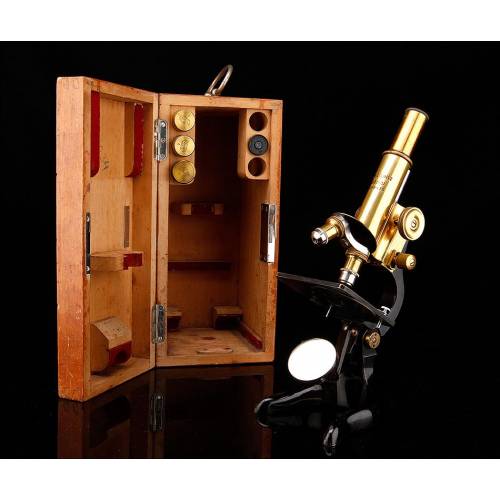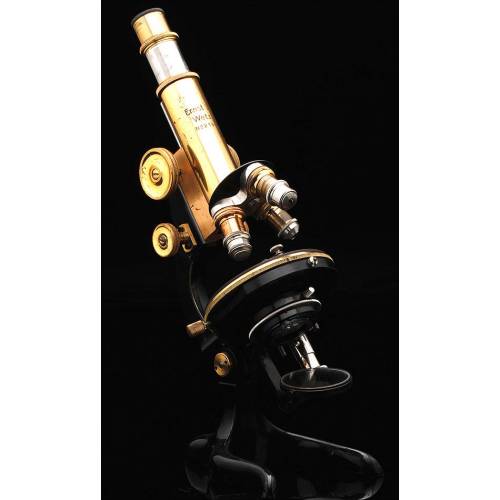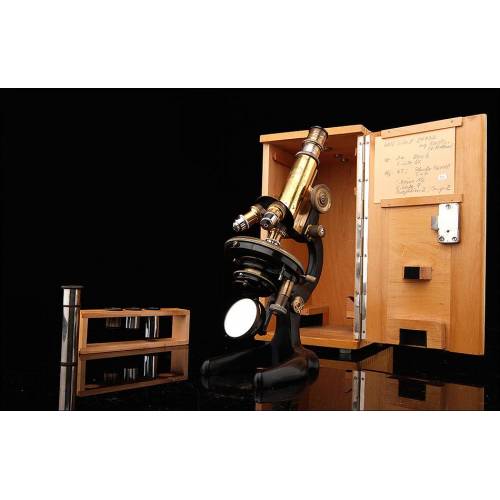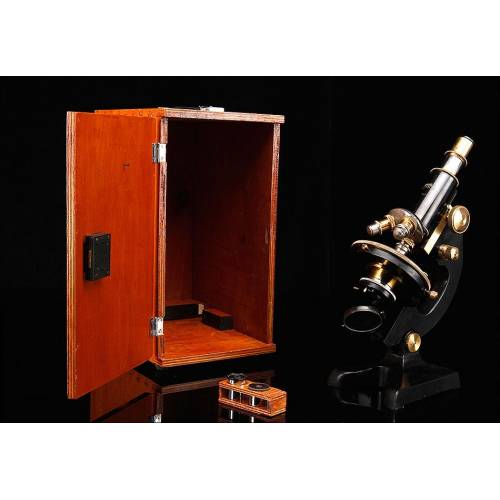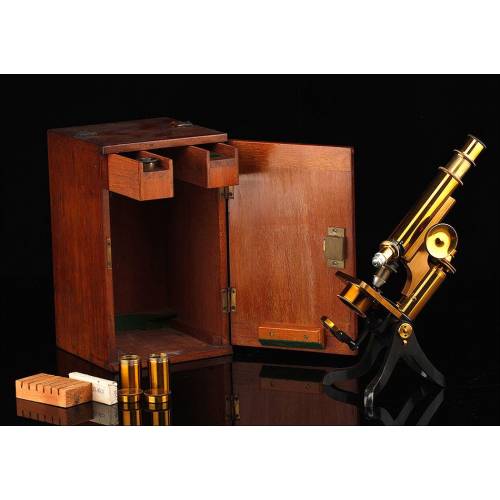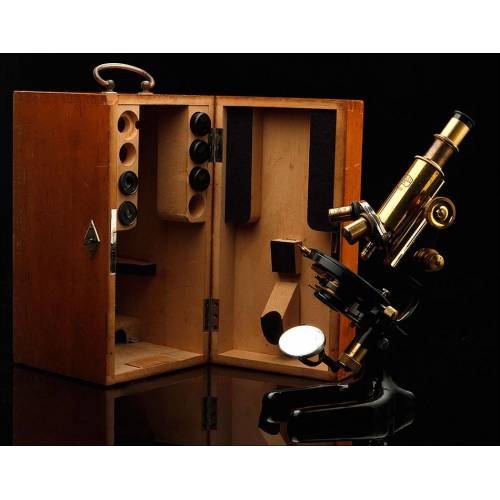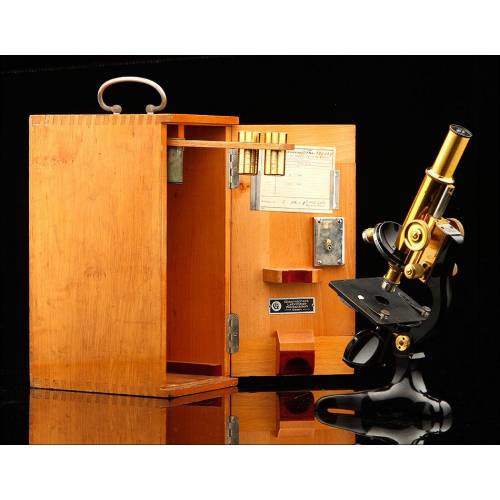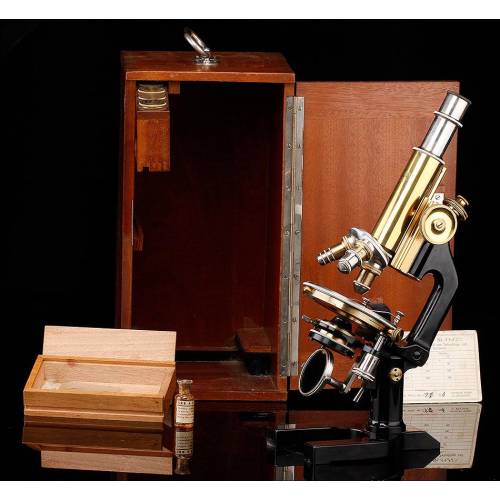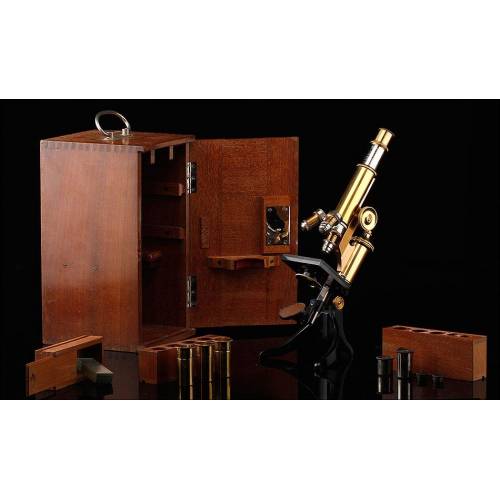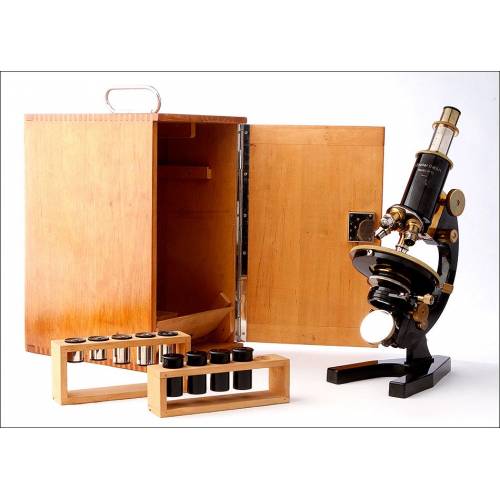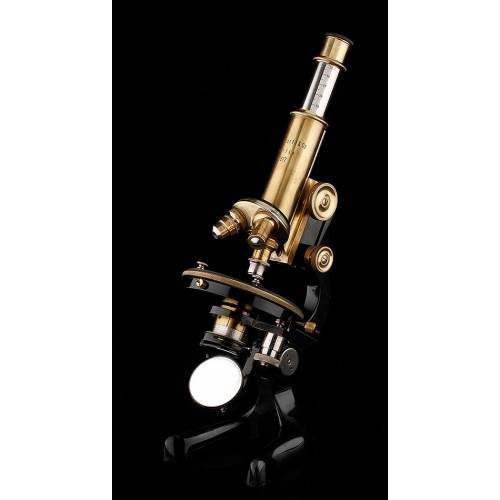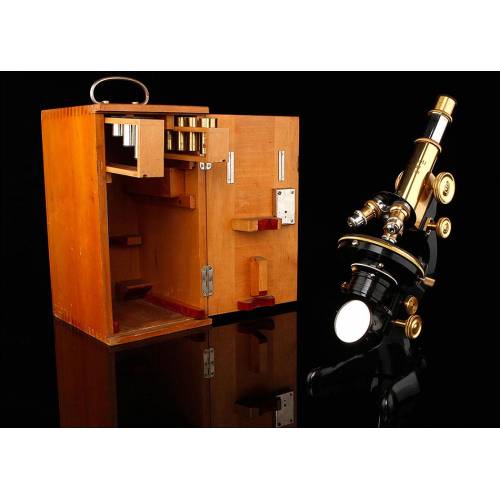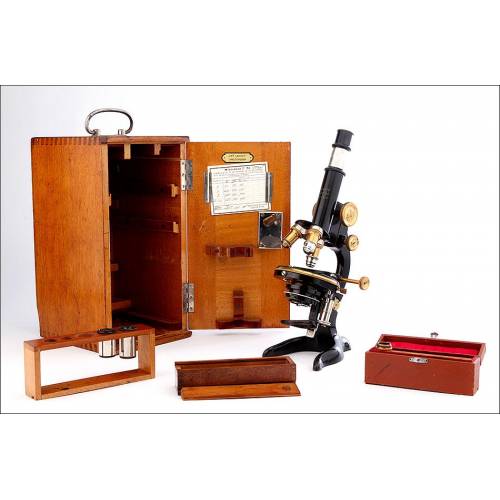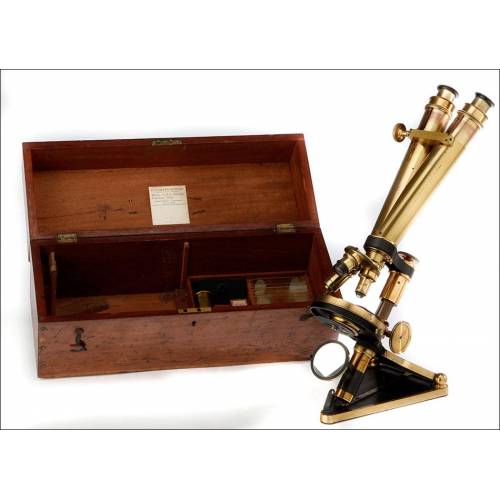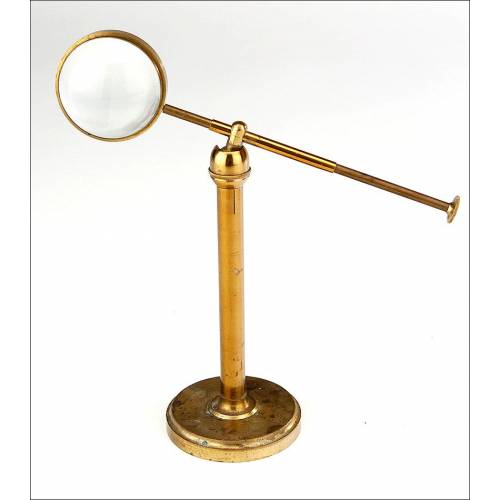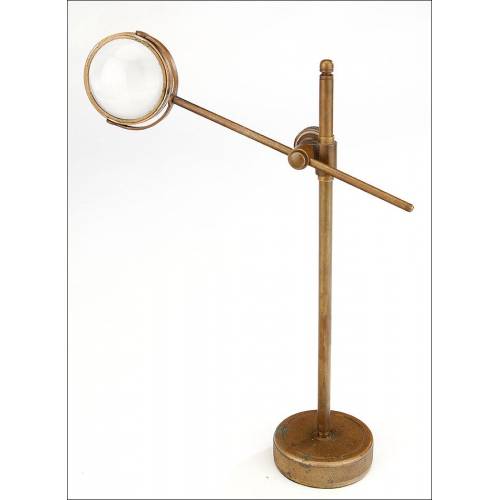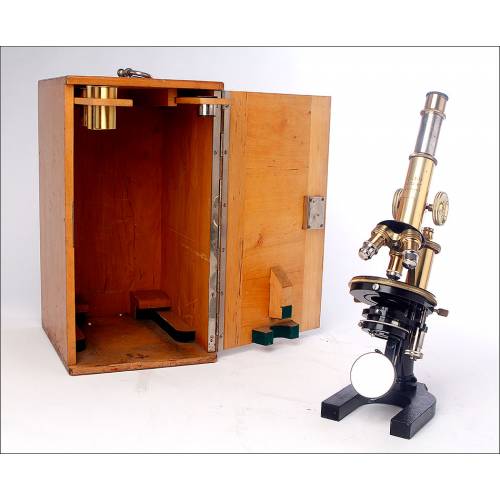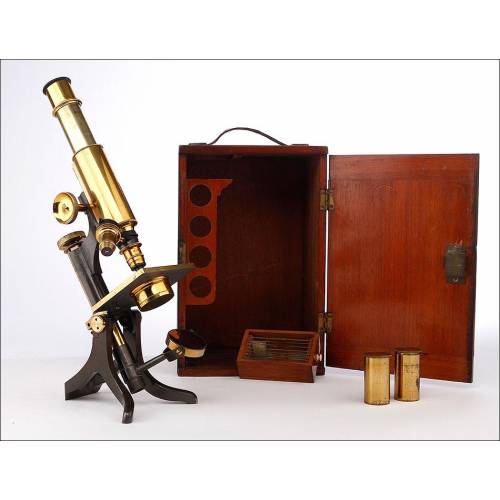C-699
Antique Carl Zeiss Microscope, "Jug Handle". Germany, Circa 1920-30
Magnificent antique Carl Zeiss "Jug Handle" type microscope, made in Germany circa 1920-30. Complete and in excellent working condition.
Sold!
Impressive antique Carl Zeiss Jug Handle type microscope, made in Germany circa 1920-30 and in excellent condition. The microscope works very well: the No. 3 lens included in the accessory set does not have a good focus, so it has been replaced by a similar model of the Leitz brand in perfect condition and with maximum sharpness. In addition, it is accompanied by a complete set of 5 eyepieces in superb condition. The microscope shows a curious design, with a black enameled iron body and rear handle (which gives its name to the type of apparatus). The black enamel matches very well with the brass of which the other parts are made: the tower, the screws and the lenses. The microscope has a horseshoe foot and retains the black enamel in very good condition, smooth and shiny. The brass is protected by an original antique transparent lacquer that fulfills a double function: to avoid its deterioration and to give the golden surface an antique and warm patina. On the front of the microscope we can see the name and logo of the manufacturer, CARL ZEISS JENA, accompanied by the serial number 82246. The case is a fantastic solid mahogany wooden box, with the door constructed of combined pieces of wood forming a nice diamond pattern. The case retains the original lock and key in perfect working order. Collectors of vintage scientific equipment will appreciate the superb design and perfect functioning of this antique Carl Zeiss microscope. Measurements: Width: 15.5 cm. Height: 38 cm.History of Carl Zeiss Carl Zeiss is a powerful German company dedicated to the manufacture of optical material, research and measuring equipment and medical instruments. The origins of the company date back to 1846, when the optician Carl Zeiss opened his first business in the town of Jena: the following year, the workshop was already manufacturing microscopes full time. In 1861, the Zeiss firm was already considered one of the most important microscope manufacturers in Germany; five years later, the workshop sold its 1000th microscope. In 1872, Ernst Abbe and Otto Schott joined Zeiss and contributed to the considerable improvement of the lenses produced by the company. Carl Zeis died in 1888, but the company moved on and diversified its business into other fields, such as cameras. To this day, Zeiss still exists as part of three separate corporations.

